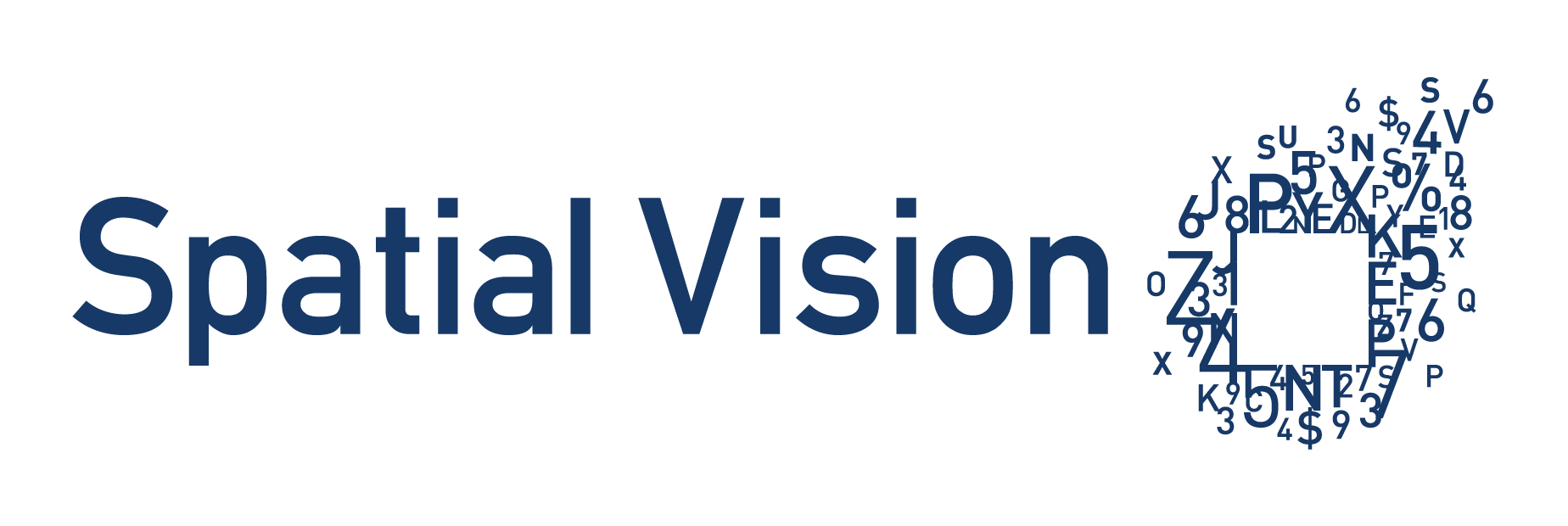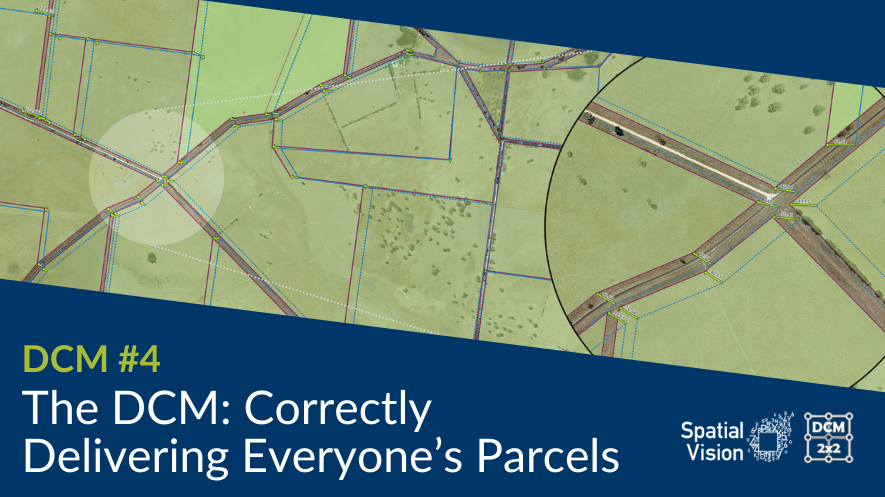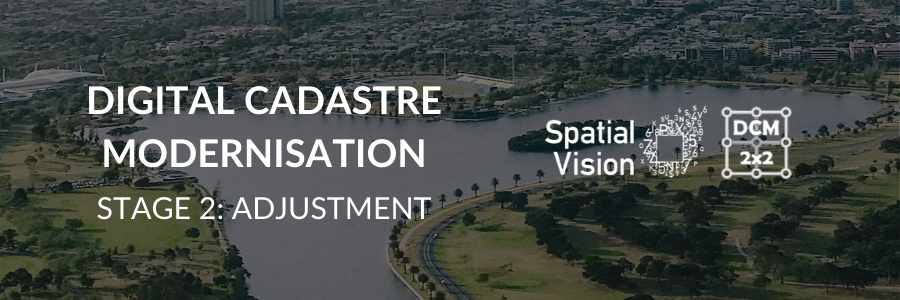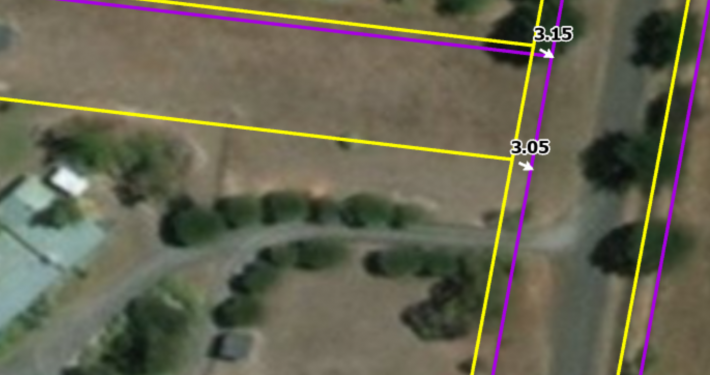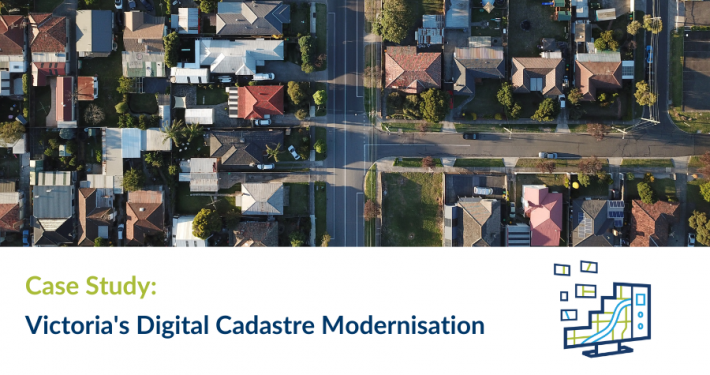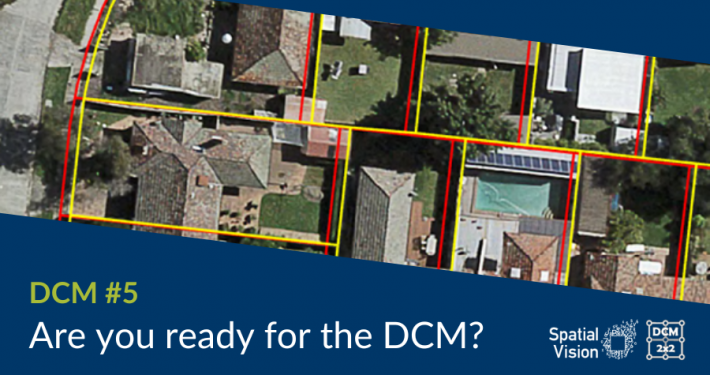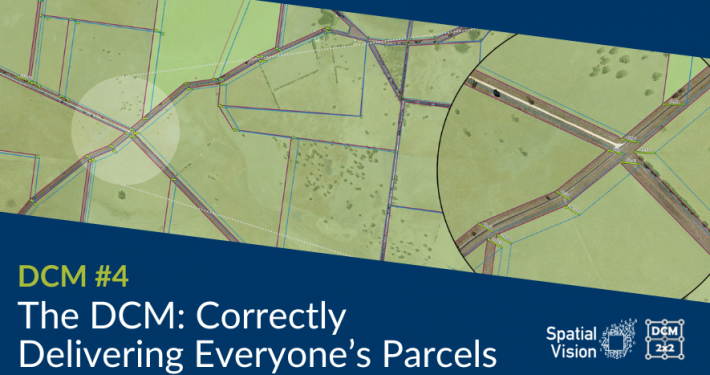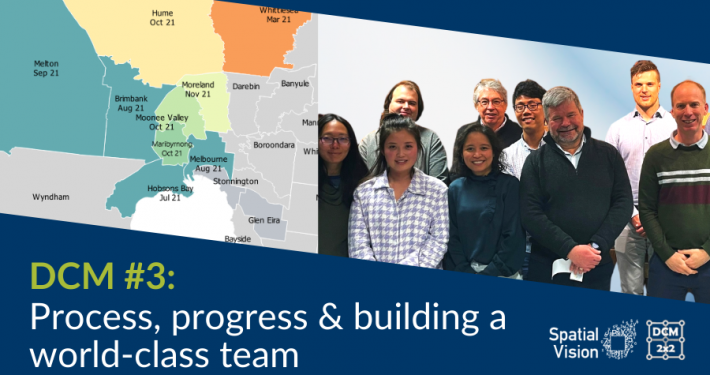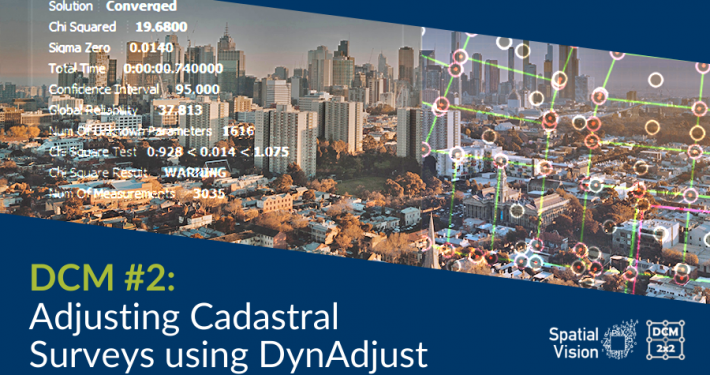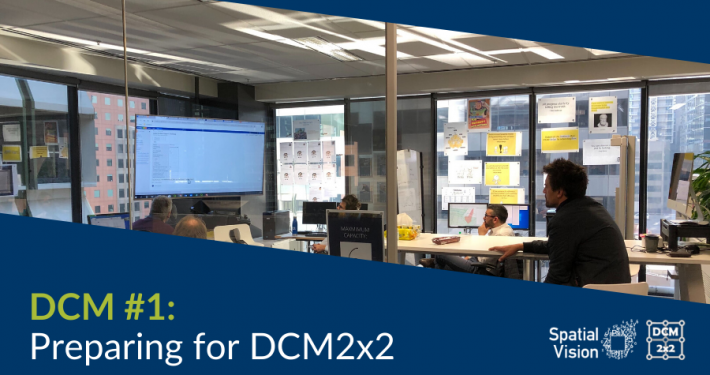“Until Victoria took the courageous decision to require the technically complex rigorous least-squares adjustment process to be applied, it was generally believed to be ‘too hard’. Spatial Vision has brought together the tools to use complex least squares adjustment tools with GIS software, providing the user interface and the management of massive data volumes in a world-first solution.”
–Stephen Boothroyd, DCM Quality Assurance Manager
In the satellite age one might fairly assume virtually all maps are 100% accurate.
Regular homeowners might be shocked to know their land parcel, as depicted by Vicmap Property, may be slightly off kilter. In fact less than 4 per cent of parcels in Vicmap Property urban and peri-urban areas currently meet the high spatial accuracy requirements of users. These areas make up 70% of Victoria’s land property parcels.
Whilst accuracy improved over the past ten years compared to Victoria’s base maps of the 1990’s, there was a compelling case for the epic $47m Digital Cadastre Modernisation Project (DCM) which is creating one source of truth – one that is accurate, modern and easily accessible.
A big project with big benefits
So just how great is this undertaking and who will be the benefactors?
Victoria comprises 3.3 million land parcels for which the Government holds 800,000 electronic PDF plans and surveys. For many user groups and sectors the painstaking four-stage process to digitise these documents and make corrections is worth it, including;
- Government departments and agencies
- Local Government
- Utility Providers
- Surveying profession
- Spatial profession
- Universities/researchers/training providers
- Data aggregators/providers
- Building, property and construction sector
- Industry bodies
- Vicmap products
Vicmap, which provides the foundation of all mapping in Victoria, is available as open data and is accessed by more than 6,000 customers over 100 million times per year. This project will enhance the locational accuracy of Vicmap and is key to ensuring it provides the digital infrastructure Victoria needs, both now and into the future.
“There’s a lot of exciting things this digital data will support as DCM is an upgraded cadastre database, better fit for use with current technology,” says Spatial Vision DCM Production Manager, Ryanne Firme.
Upgrading the digital cadastre will reduce financial costs and boost productivity for government, private sector and everyone involved in the planning stage of large infrastructure projects. The project will also deliver cost and time savings in property development and real estate and provide better information for our utilities, helping to improve location and maintenance of assets. It may also reduce excavation incidents, as well as enabling property boundary information to be more easily used in the broader spatial domain.
The Department of Environment, Land, Water and Planning (DELWP) Victoria entrusted Spatial Vision with completing Stage 2 of the process. This entails joining data from the plans and mathematically adjusting it to improve spatial accuracy.
The data is used to calculate the most reliable position (through Least Squares Adjustment) for each property parcel node whereupon a unique identifier is assigned to enable the creation of a numerical cadastre. This process provides an estimate of the spatial quality of each node, line and parcel within the Digital Cadastre Modernisation Database.
The project is also well progressed towards automating future updates to a progressively more accurate digital cadastre upon the lodgement of subdivisions via ePlan (a digital data file of surveying and administrative information related to a subdivision survey). New systems and services are scheduled to be implemented from late 2022. Inconsistencies in plans will also be identified.
Ground breaking
While New Zealand boasts a full digital cadastre, it was a gradual compilation of online survey plan lodgements over the past 20+ years. Victoria is unique in running an automated adjustment process after back capture of paper (pdf & image) plans. The least squares adjustment and custom-built tools are a truly innovative approach. Spatial Vision’s adjustment operators are the first to see Victoria’s cadastre with plans in the correct relation to each other. Until now, cadastral surveyors have been working on individual plans.

“Everyone’s motivated to perform their bit for this innovative project. The team is also a firm believer of continuous improvement, so while our processes now are streamlined, it continues to evolve.”
–Ryanne Firme, DCM Production Manager
All hands on deck
Despite the many technical and process improvements, each cadastral block adjustment is completed by an individual. Spatial Vision’s team will soon number 20 (FTE) staff. This three-year production features a number of junior, intermediate and senior ‘Cadastral Adjustment Technicians’ assigned to various local government areas, logging properties one by one. At the production level, roles include ‘trouble-shooter’ (there’s one licensed surveyor in daily production), team lead and adjustment technicians. Management is broken down to Project Management, Production Management, and Quality Assurance.
They might sound like superhero gangs (and in terms of this project they probably are) but the three teams – Dynasquad, Squadron and The Outliers – are all fully capable of carrying out every part of the adjustment workflow, including quality reviews.
“We cycle through and swap team members about every 6 months to foster good working relationships between everyone and for individuals to learn from other team members”, adds Ryanne.
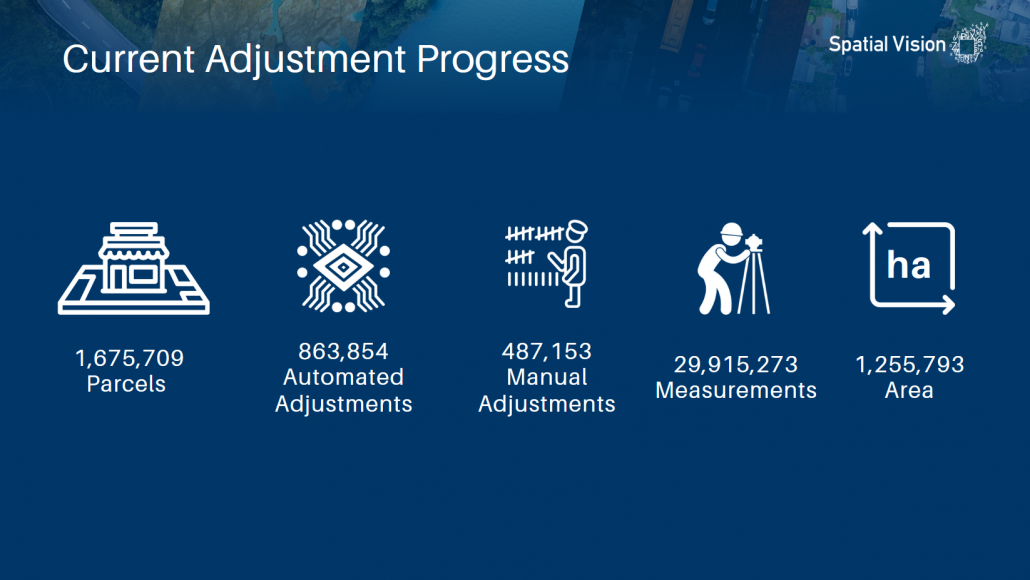
Knowing one’s boundaries
Owners have been seen to (let’s presume) unknowingly stray outside their boundaries when building, due to erroneous surveys or outdated survey records. Another motivation for DCM Project surveyors helping build this one-source-of-truth dataset is making life easier for fellow surveyors in the future, especially in tricky areas.
“Everyone needs to remember and understand we are only using what’s in landowner’s titles on the original survey plan and can’t make any changes to them. We are just stitching them together into a contiguous cadastral fabric represented by the coordinates of parcel corners, not just lines on a hard-copy plan. Those properties that have erroneous surveys, outdated survey records, or end up with survey artifact from surveys done from opposite ends, will be evident,” explains Ryanne. “Actual surveys will still be conducted to prove who’ll get excesses, shortages to fix gaps or overlaps. There will continue to be a need for experienced licensed surveyors for the foreseeable future.”
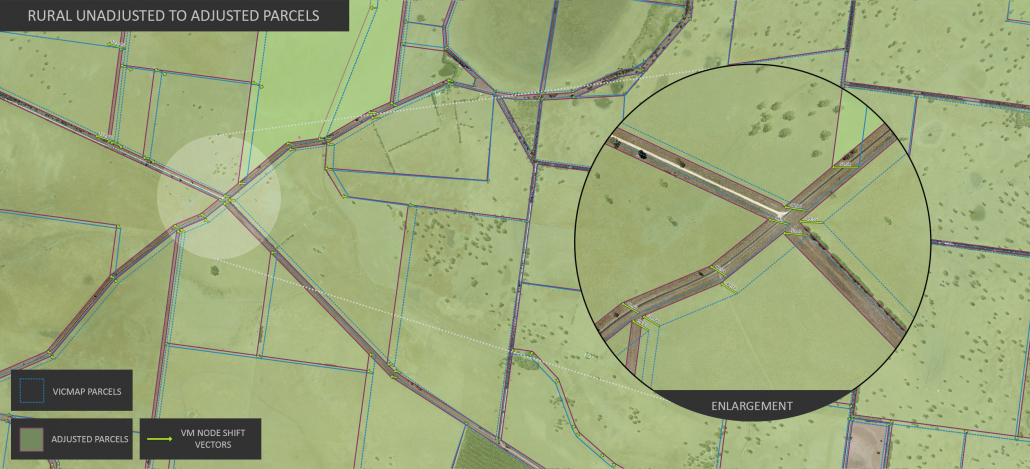
Pictured: VicMap parcels (blue) compared to DCM adjusted parcels (red) in a rural setting
Adjusting plans
While accuracy has improved over the last seven years through new surveys, the geographic extent of these accuracies still reflects the original map base control from the 1990s. In some regional areas the variance is as great as 25 to 50 metres from the true cadastral position – a matter complicated in some areas by old or non-existent surveys. The standard deviations applied to the measurements is not ideal and makes adjustment challenging. A lack of occupation (fence corners, buildings, etc) only adds to the challenge.
Initially GIS/spatial professionals were deemed right for the project, however it became apparent surveyors were better equipped to make decisions when performing manual adjustments.
Because the whole project is segregated into four stages, Spatial Vision is constantly factoring in data flow up and down stream, collaborating and maintaining an open mind around operations across the other contractors.
“I feel that once surveyors realise what is available to them, it is going to revolutionise the way we work.”
–Phillip Nixon, Licensed Surveyor
Are we there yet?
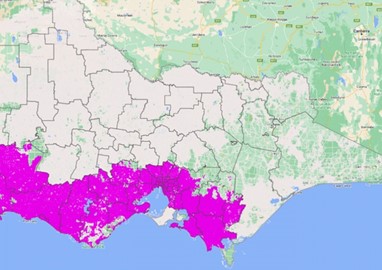
The first year, 2020, was a little slow with many technical issues requiring resolution. From May last year the pace picked up and the revised April 2023 target is within reach.
Whilst progress appears painstaking, to date, the project has transformed 70% of the measurements associated with the State’s 3.3 million land parcels into digital format, it has conducted an initial adjustment of 26 municipalities, and has begun to integrate the updated and enhanced spatial data within the Vicmap Parcel and Property maintenance environment. The project is also well into automating future updates to the digital cadastre upon the lodgement of subdivisions via ePlan (a digital data file of surveying and administrative information related to a subdivision survey), with new systems and services scheduled to be implemented from late 2022.
To non-cadastral adjustment technicians, this sounds like rather tedious and repetitive work. So what drives staff and keeps them motivated?
“It helps that they are all slightly mad!” laughs Stephen. “The work is certainly challenging and those ever-changing challenges is what motivates the team. While we thought it was categorically repetitive work, each LGA poses a unique situation.”
A little like a team assembling a giant jigsaw puzzle, being part of something for which the end result will be so impressive in terms of size, technical execution and legacy, makes it all worthwhile.

Image: Members of the DCM team
For more information about DELWP’s DCM project, visit: land.vic.gov.au/surveying/projects-and-initiatives/digital-cadastre-modernisation/about-the-project
Learn more about our Digital Cadastre Transformation services here.
- Getting the most out of your GIS strategy & investment - July 24, 2024
- Climate Change & Homelessness: Understanding the Connection - July 24, 2024
- Navigating the complexity of geoscience data analysis - July 24, 2024
